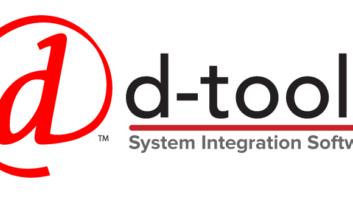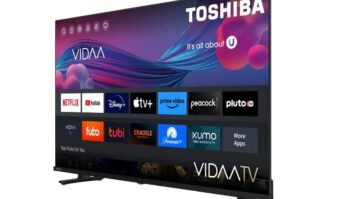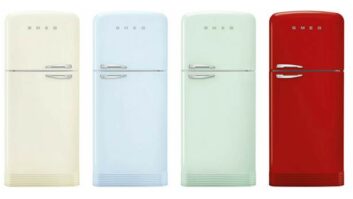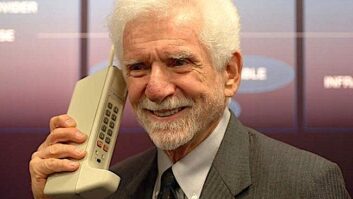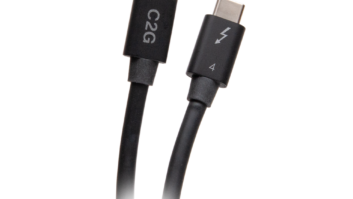TWICE: How did sales of audio components, HTiBs, and audio systems fare in 2006? What is the outlook for 2007?
David Bales, Pioneer: We hope that as flat-panel high-definition television prices continue to decrease, consumers will begin to focus on upgrading their audio components to complement the new excitement that flat-panel HDTV brings. There are increased opportunities with home theater components that feature improved HDMI 1.3, advanced calibration systems, portable audio connectivity, distributed audio via custom installation, as well as new IP-based music distribution via clients and servers.
In addition, newly arriving sources, such as Blu-ray Disc players and HD gaming systems, can also help drive audio sales upward as early as 2007.
Paul Bente, Harman: Thus far (as of around mid-November), 2006 sell-in and sell-through numbers indicate modest improvements in mid- to high-end loudspeakers and electronics sales at factory and dealer levels. Our own high-end home theater solutions and mid-market system solutions fared particularly well. This category increase more than compensated for declining entry-level product sales.
Mike Klipsch, Klipsch Audio: Through September 2006, loudspeaker sales for 2006 in dollars are down about 2 percent. However, the average sale price of stand-alone loudspeakers has increased by as much as 5 percent. This signals that consumers are buying more quality at less volume. It appears this trend will continue in 2007.
With respect to HTiBs, it is the exact opposite. The industry is selling a higher volume of units but at rapidly falling prices. While the average price of an HTiB rests in the $400 range, I’ve seen these systems advertised for as low as $199. Because HTiB prices are dropping so quickly, this market segment is also undergoing a decrease in total sales dollars.
On the other hand, iPod speaker systems are experiencing a surge in both total sales dollars and price. In fact, total dollar amounts are up in the 12 percent to 15 percent range. It appears that volume will continue to be strong, but price compression will adversely affect dollar sales.
Andy Mintz, Philips: Factory-level sales of HTiB saw momentum return in the second half of 2006 after a challenging first half. The sales outlook for 2007 is promising as HTiB does not appear to be shrinking as much as it is changing from traditional 5.1 systems to space-saving and aesthetically pleasing 2.1 sys tems.
Paul Wasek, Onkyo: Sell-through for HTIB and receivers have been good for Onkyo from both a units and a dollar standpoint. The introduction of the HDMI TX-SR604 and 674 AVRs along with component-based HTiBs based on the SR604 were well received. We anticipate a very strong 2007, especially with the need for new audio systems that support the HD DVD and Blu-ray platforms.
TWICE: Why are the above segments growing or declining in ’06/’07?
Bente: Retailers today have the choice of selling product that require no special services or merchandising requirements (“stack and rack”) or catering to higher ticket, serious home entertainment customers (“merchandise, demo and deliver”). Most can’t do both. As a result, as some dealers make the easy choices, the numbers may indeed go down before they go up in the component audio or higher end system solutions categories.
The smarter retailers are figuring out how to serve the serious, step-up CE customer as quickly as possible because this is what will separate the pack in 2007. As price-driven retailers take a bigger bite out of the commodity CE market, we see an opportunity for the service-oriented retailers to capture the serious CE customer with better displays and demos, better service and, of course, high-performance products.
Klipsch: One of the reasons that overall loudspeaker volume is down is because flat-panel televisions are today’s hot-ticket items. Many consumers have been spending most, if not all, of their home entertainment budget on these televisions.
However, this growing market segment is not bad news for the audio industry. As television prices continue to drop and consumers become more educated on what models to buy, they are visiting electronic stores more often. While shopping, they gain increased exposure to audio products, and with the right sales guidance, a video sale will drive an audio sale. Consumers need to know that stunning picture quality with inadequate sound won’t deliver the “cinematic effect” they crave.
For the HTiB segment, it all boils down to price wars.
Mintz: One major challenge to HTiB growth is consumer understanding of the 2.1 system. They offer great sound performance, nontraditional form factors, ease of installation and less clutter than 5.1 systems. However, it is a challenge to convey these benefits on the sales floor. Misconceptions like “less speakers equals less sound” or “5.1 is better because 5 is bigger than 2” have to be overcome through demos and point-of-sale material. This becomes hard when home theater is not merchandised with the television displays they are created to complement.
Jeff Talmadge, Denon: The main driver for audio components sales was the re-emergence of the A/V receiver as the center, or hub, of the consumer’s entertainment experience. With one central device, consumers now have the ability to connect, control and enjoy many forms of rich content media, all from the convenience of their living room.
Integration of HDMI connectivity, with conversion and with scaling of other sources up to HDMI, to provide a single-cable connection was a key feature. Add to that the ability to connect and control iPods through mainstream audio components, and there has been a tremendous lift. That includes some products being able to stream Internet radio and music files from PCs.
For 2007, the A/V receiver will evolve to high-definition surround, with decoding for Dolby Digital+, Dolby TrueHD and dtsHD. To do this, the inclusion of HDMI 1.3 will be needed and should be available in 2007. Streaming of media content will be enhanced to include wireless connectivity and the ability to handle more audio and video formats.
Wasek: While there is certainly increasing competition for a finite level of disposable income, we are more interested in adjusting to the changing appetite of the consumer and making adjustments to increasingly offer solutions to their needs. The same desire we have seen for better video will translate to the desire for the enhanced performance and versatility offered by separate audio (non-HTIB) components. The HD DVD/Blu-ray issue aside, consumers are beginning to recognize more and more that the performance of their audio should be at least equal to that of their display device.




